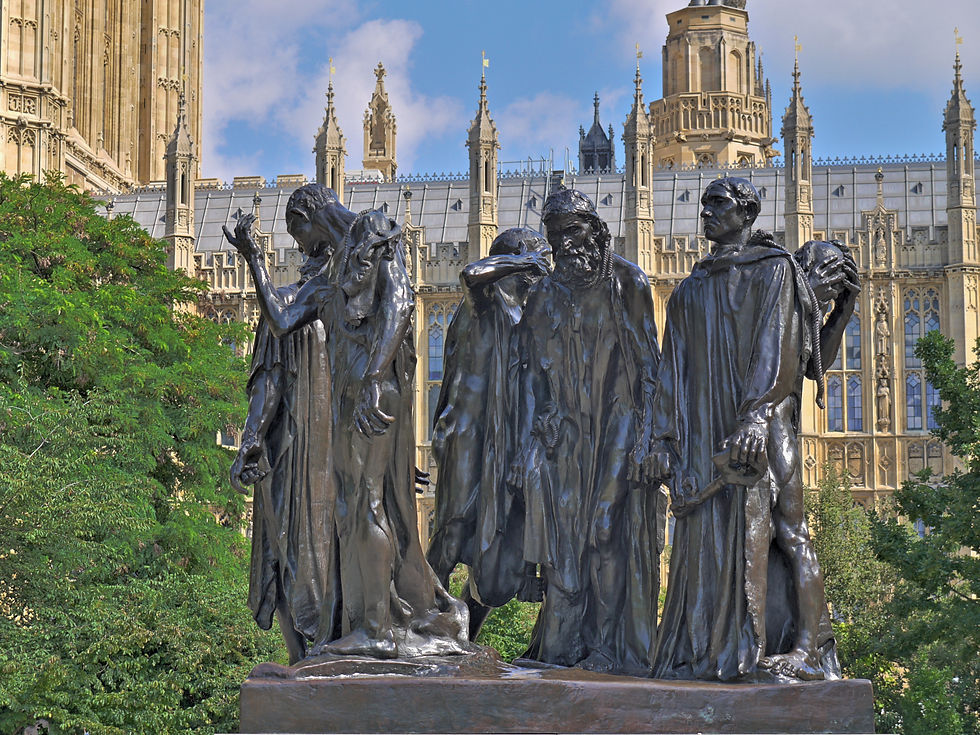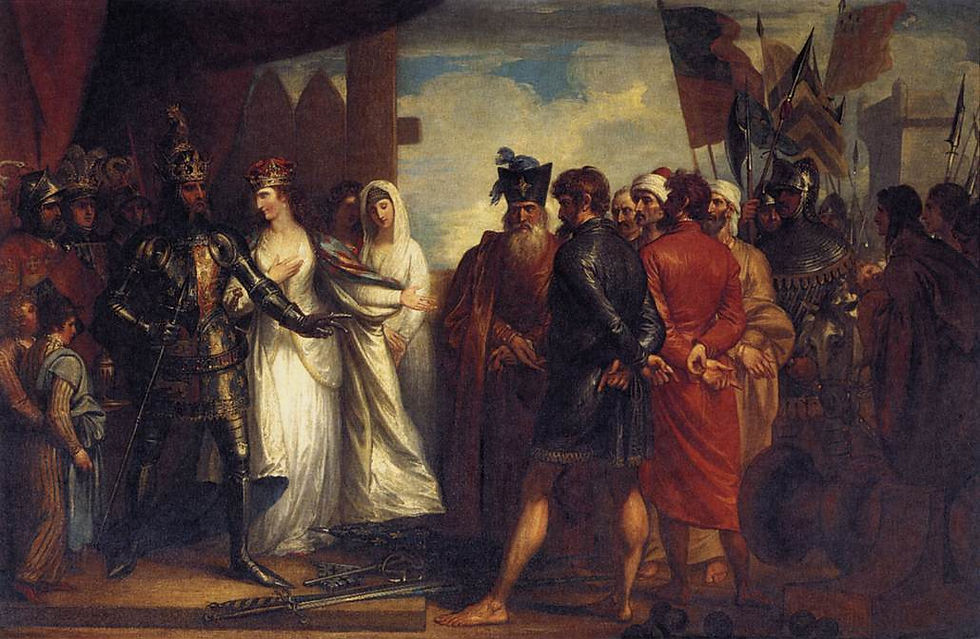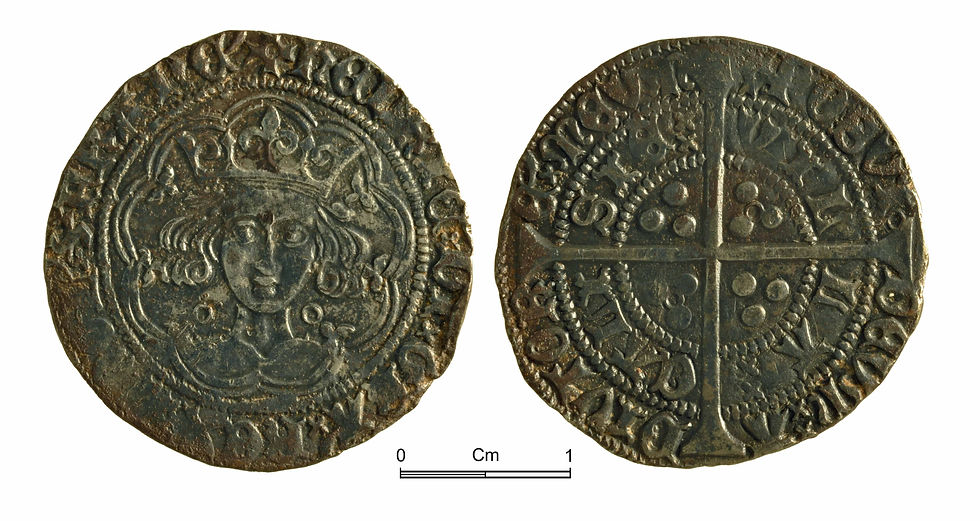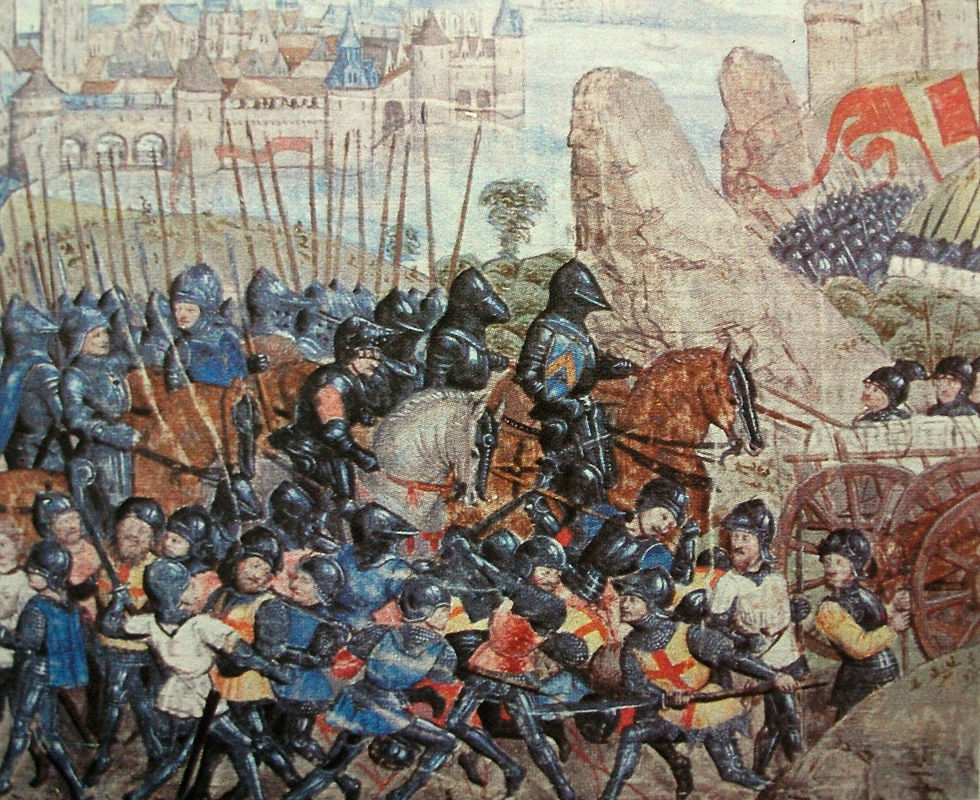Calais: A Colony? / Barbican or Beyond?
- EPOCH

- Feb 28, 2022
- 5 min read
Updated: May 27, 2022
Daniel Wigmore | University of Southampton

It's remarkable to consider that the ten wealthiest towns in late-medieval England were maritime. Of the next forty, nine were seaports, sixteen riverports, and the rest were within a day's travel on a heavily laden cart to a coast or river. Besides London, few other towns could rival the importance of Calais: England's famous staple port in north-eastern France. Maritime trade was patently central to the economic life of England, whose financial reliance on the town, principally through exporting wool, was accentuated during the Hundred Year's War with France.
Historians have long reflected on how Calais and Calais Pale were of central importance to English rulers from the fourteenth to the sixteenth century. The town is often lauded from an economic or military perspective: it mirrored and quickly eclipsed the Cinque Ports on the Kentish coast and has been proposed as a key area of military professionalism and careerism with an expensive permanent garrison to boot. It has been said to have held resonance with Edward III as Harfleur had to Henry V, and during Mary I's final days, she reportedly quipped that 'When I am dead and cut open, you will find Philip and Calais inscribed on my heart'. To say that Calais was often on the minds of English monarchs would be, at best, an understatement.
Yet the history of Calais extends beyond the military significance of its occupation, and the society behind its walls is as illuminating as the men guarding them. Froissart describes an episode after the town's initial conquest in 1347, where six leading citizens of the city were marched from the gates expecting execution, only to be granted mercy at the pleading of Queen Philippa of Hainaut, wife of Edward III. Apocryphal or not, the entire French population of the town was subsequently expelled and replaced with nearly entirely English settlers: confirmed by a charter later in the year dismissing any non-English inhabitants. Efforts were made to include the town beyond its strategic capacity of controlling the English Channel and the economic access it provided to the Low Countries, but rather to govern the city as if it were in England and a place it as a central tenet of English foreign policy. In the Treaty of Bretigny in 1360, Calais and other territories were claimed to be ruled as part of England, without due homage to France, with the King of England to 'rule in perpetuity'. Consistently throughout the diplomatic efforts of Edward III, Calais was treated as though it was English: designated as a Staple Port of wool in 1363, establishing an English Mint by 1369, and electing Members of Parliament to represent the town in Westminster from 1536. Even the Libelle of Englyshe Polycye, a mercantilist poem from the 1430s, champions a defence of Calais at any cost.

By the 1370s, Calais was a strategic outcrop for both naval and terrestrial control. Along with Brest and Cherbourg, these three towns acted under the 'barbican strategy', designed to provide opportunities for quick military entry into France at a greater cost to the French than to the English. It had already exceeded this role, however, with its size and economic position allowing it to function as one of the first English Overseas Territories instead. Although the land of the Pale and around the other Barbicans still spoke French or Flemish, Calais itself was dominated by English, with English Law, English soldiers, and English merchant citizens keen to monopolise on their position. Similarities can be drawn to the garrison in Gibraltar from 1704, the British enclaves in Southeast Asia after the Straits Settlements in 1826, or the Irish plantations from the mid-sixteenth century.

Hints of future colonial agitation can be found in Calais as well, with the mutiny of the garrison in 1406. Underpaid, undersupplied, and for a long time frustrated with central mismanagement of finances, the garrison seized £30,000 of wool in arrears from local merchants, leading to a petition to Edward IV regarding the 'outrage pouverte and wrychidnes that we ben in'. Yet this was not seen as treasonous and may have even had tacit support from the captain at the time. Instead, the mutiny acted to reinforce the identity and loyalty of the garrison, not as an indirect challenge to the authority of the English crown. They stressed that the safety and security of the staple, the merchants, and the economic prosperity that came forth from the city were dependent on the crown meeting its military obligations. By 1407, the garrison would be pardoned, and measures undertaken to ensure payment was provided in a timely fashion.
Yet these parallels to later colonial activities are somewhat coincidental. At the time of the town's conquest in 1347, the idea of English as a national identity was still in its infancy, and while by 1558 this had been cemented, Calais was then an isolated castle on the French coast trapped in a military deadlock with a hostile opponent. The displacement of native peoples in favour of an economic and strategically-minded English population wouldn't be unusual in the early-modern period, but similarly, acts as a reminder of the casual brutality often found in medieval conflicts. Even the unique nature of Calais would shift its position as the nature of war with France shifted from monarch to monarch, evolving from chevauchée to conquest to commerce.

Calais as an English possession is itself an oxymoron. While certainly an advancement upon the idea of a military outpost like the Barbicans of Brest and Cherbourg, it is difficult to position it as an English colony as we may come to think of it. The town was a surprisingly successful experiment of English overseas control, but the unique nature of its economic centrality and closeness to royal authority set it apart from both other Barbicans and the events that characterise the colonial period to come. Unique among English possessions? Yes. Economically and strategically important? Certainly. Proto-colonial? The jury is still out.
Further Reading:
Ayton, Andrew, ‘The Military Careerist in the Fourteenth Century’, Journal of Medieval Studies, ed. by Remy Ambuhl & Craig Lambert, 43, 1 (2017) 4-23.
Friel, Ian, ‘How Much did the Sea Matter in Medieval England (c.1200-c.1500)’, in Roles of the Sea in Medieval England, ed. Richard Gorski (Woodbridge: Boydell Press, 2012), pp. 167-187.
Grummit, David, The Calais Garrison: War and Military Service in England, 1436-1558 (Woodbridge: The Boydell Press, 2008)
Rose, Susan, Calais: An English Town in France, 1347-1558 (Woodbridge: The Boydell Press, 2008)
Warner, George, ed, The Libelle of Englyshe Polycye: A Poem on the Use of Sea-Power, 1436 (Oxford: Clarendon Press, 1926)
Daniel Wigmore is in his third year of a PhD on strategy and supply of English coastal Barbicans in the late fourteenth century, supervised by Dr Craig Lambert at the University of Southampton. He had previously studied for an Undergraduate Degree in History and a Masters Degree in Medieval History at Royal Holloway University of London, and is interested in logistical, military and political history.
Twitter: @Wigormortis






